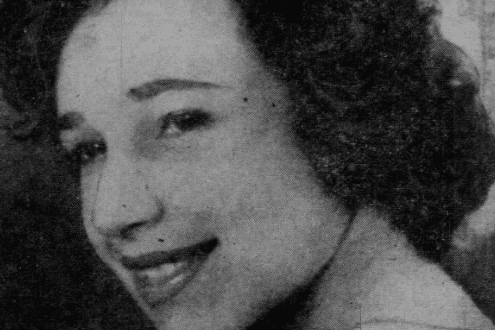The gruesome 1950s case of a Sunderland optician who was murdered and washed up on a Caribbean beach
and live on Freeview channel 276
It had all the hallmarks of an Agatha Christie murder mystery: a love interest gone wrong, a bone chilling-killing followed by a calculated cover-up and a gruesome discovery.
There's the young doctor, the beautiful woman and the household servant, and set to the backdrop of an exotic Caribbean island still under the influence of colonial control.
Advertisement
Hide AdAdvertisement
Hide AdBut sadly, this upsetting story is true, and claimed the life of a young woman who had already escaped a terrible fate.
So just how did former Sunderland optician Inge Singh become the victim of a brutal murder which resulted in her being mutilated and washed up on a Trinidad beach in April 1954?


Inge Paula Braunschweiger was born in Germany on February 17, 1927.
Born into a Jewish family, along with her younger sister Nora, she was evacuated to London in 1939 to escape the political persecution of Nazi Germany.
Advertisement
Hide AdAdvertisement
Hide AdLittle is known of her time growing up in the capital, but in the mid 1940s she won a scholarship to study ophthalmology at Edinburgh University.
It was there she met Trinidadian-Indian Dalip Latchmin Singh, a solicitor who was training to be a doctor.
The soon to be Dr Singh had arrived in London as part of the Windrush generation and he may have already crossed paths with Inge during their time in the capital.
At some point love blossomed between the couple, despite Inge moving to Sunderland in 1948, where she lived and practised as an optician between 1948 and 1951.
Advertisement
Hide AdAdvertisement
Hide AdDuring this period, Singh was completing his medical degree, but after qualifying as a medical doctor in 1951, he whisked off the then 24-year-old Inge to the Paradise island of his homeland where they married in November 1951.
However, this idyllic paradise was sadly to be short-lived for Inge.
The mystery behind the murder which unfolded began with a family feud and the breakdown of a relationship.
Taking up the story, Sunderland historian and Windrush expert Bill Hern said: “The families were against the marriage from the start.
Advertisement
Hide AdAdvertisement
Hide Ad“Dalip’s family were Hindus and were against the marriage on religious grounds while there are interviews with Inge’s sister, Nora, in which she described how there was something about Dalip that she didn’t like and that he didn’t come across as a very nice person.
“During the same interview, Nora explained that leading up to the murder, the pair had separated and Inge had been staying with family she had in the USA.
“During Singh’s trial, the court heard accusations of extra-marital affairs on both sides.”
In spring 1954 Inge returned to the house the couple had been living in to “tie up some loose ends”.
Advertisement
Hide AdAdvertisement
Hide AdIt proved to be a fateful decision as on April 6 1954, Inge disappeared and as we now know she had been brutally strangled and killed by Singh.
After killing his wife, Singh decided to put his medical training into practice in the most callous and grotesque way.
Bill said: “During his trial, the court heard how Singh had already decided to dispose of Inge’s body out at sea.
“He made an incision from Inge’s windpipe to her hips and removed some of her organs to prevent her body from floating.
Advertisement
Hide AdAdvertisement
Hide Ad"He then put Inge into his car and drove 40 miles to the south of the island where he is believed to have gone out into the sea at Godinot Bay and dumped her body.
“He had put her in a body bag which he filled with sand, again to stop Inge from floating.”
However, despite Singh’s best efforts and medical expertise, Inge’s body did float and she was washed ashore at Godinot Bay two days later where she was discovered by fishermen who alerted the police.”
An investigation was launched, with Singh even being asked to identify Inge’s body. He denied it was Inge and told authorities he didn't know where she was.
Advertisement
Hide AdAdvertisement
Hide AdSo at a time long before DNA forensics, how did Singh come to be arrested and convicted of Inge’s murder?
The answer lies with one of the servants who was living at the couple’s Port of Spain home.
Bill explained: “Singh was arrested after one of his servants reported to the police about overhearing a violent argument between Singh and Inge.
“The servant also said he saw Singh leave the home with Inge in the back seat, - which was very unusual - and return without his wife.”
Advertisement
Hide AdAdvertisement
Hide AdFollowing a trial in a court of law in Trinidad, Singh was sentenced to death. He twice unsuccessfully appealed his conviction and was hanged in a Port of Spain prison on June 28, 1955.
Inge was just 27 when she was tragically killed, leaving her sister Nora heartbroken.
Nora died in Hertfordshire on December 21, 2014.